Have you grown tired and frustrated over time when periodic health challenges emerge affecting you or a family member identifying your home as inaccessible, if even for a short time during recovery? Have you observed other families facing this common dilemma? Are you coming to the realization yours and almost all other existing homes lack flexibility or adaptability having reached their potential? An accident or illness brings the undeniable need for home access out into the open. If you have suddenly become caregiver for your spouse or another family member, you know you are not alone in recognizing this dysfunctional housing phenomenon. Many home caregivers face challenges inside their private residences because traditional homes lack accessibility due to their antiquated architecture. There simply isn't enough room to properly care for another person within a given living space. But where did this commonly seen lack of home accessibility in nearly all homes come from? Perpetual, status quo building techniques, and affordability provide the answers. Over time, along with the exponential birth rate of the baby boomers in the late 40s and 50s, the need for more housing created sprawling American suburbs to accommodate the growing families. Developments sprang up with few architectural options while affordability was the main concern. Today, these same homes slowly and increasingly signify outdated and obsolete architectural barriers exposing a true lack of accessibility for the very people inhabiting them. The situation is ever more expanding in time since the greatest majority of individuals want to age where they currently reside. Our homes are built for shelter, but their construction is guided by designs and dimensions demonstrating a denial or ignorance of true human abilities. It is acknowledged any family living with a disability among any of its family members always psychologically benefits from familiar surroundings. Therefore, moving is not always the best option. Fortunately it doesn't have to be this way with correct planning.
Because everyone is living longer, they will experience many life-challenging events during their extended lifespan. The desire to remain in one's current home is not driven by age. This need is a reaction to and the result of life's experience. The universal design principles are used to increase safety and independence within most current homes. Certain common sense home modifications are typically required to increase accessibility and use. These modifications include, but are not limited to, no-step entrances, wider doorways, the installation of ramps, inclusive kitchen modifications, accessible bathroom adaptations, and the application of smooth, non-skid flooring. When planning on what modifications are needed, always make a list of the existing home's most problematic areas for any or all of its residents. This basic desire is creating unprecedented nationwide challenges and a niche market in the remodeling industry known as Aging in Place. The majority of Americans over the age of 45 want to continue living in an environment they are well acquainted with throughout their maturing years. These people are looking for safety, security, ease of use, and comfort for their forever home before they must vacate due to specialized needs. Clearly, the act of Aging in Place occurs during a period of time when mature homeowners or seniors have the ability to make decisions to better support an increased quality of life. There are three segments served within the Aging in Place marketplace. The first segment includes those homeowners without urgent needs. The second segment focuses on a group of homeowners with progressive health needs. The third sector involves those people who have undergone traumatic health changes or accidental injuries necessitating immediate modifications to the home. The choice to Age in Place does not mean the homeowner has to do everything in the future by themselves. Aging in Place principles supports responsible people living life with dignity and independence even when outside assistance is essential.
But why should we eventually all face the disruptions of modifying our domains to ensure we can remain in them following a health change in life? It is long past due for us to redefine the built environment with what we know to be true. The answer lies within a forever home. This unique home opens up all rooms to all visitors. A forever home is a home you can imagine living in for a lifetime and one that will meet the needs of all residents throughout their lives. This thoughtful living environment is designed and constructed universally to conform to all residents diverse needs and abilities at any age. A forever home is unlike a starter home, and each occurs at different times during a homeowner's life. A starter home is a smaller home needed when you are starting out. This home represents a stepping stone and is a popular option concerning younger homeowners because it's more affordable. The forever home has the ability, through proactive planning and existing home modifications, for a family or all family members to live in the house for a very long time prior to anyone needing full time professional assistance. This home contains accessibility for everyone, regardless of their age, size, or abilities. During life's voyage, the forever home should become a reality as early as possible. This reality means the family can enjoy the comfortable and livable home longer. It has adequate access through wider entries and doorways, a larger kitchen, larger bathrooms, larger bedrooms, and an accessible front and back yard. The more expensive larger forever home has room to comfortably maneuver about when mobility devices or strollers are needed because architectural barriers are nonexistent.
If you have had enough of the status-quo building techniques which created our inaccessible home inventory, you and your family can put your collective thoughts together in order to design and build a house that will last a lifetime. You don't have to discard your favorite design pictures or ideas. The same elevations can be incorporated into the forever home; but rearranged into a Universal Design floorplan. Key questions should be addressed for this uber-customized home. Your family is aware of any lifestyle challenges you face due to progressive diseases or hereditary complications within the group. You know everyone gets older, and in doing so some member might lose cognitive or mobility functions. Your new uncluttered universal floorplan will accommodate a young family with children or an unexpected in-law coming to live with you. It is easy to maneuver inside this universal home going from a completely accessible bathroom to a family gathering in the adaptable kitchen accompanied by a well designed living area. Within the house, you should plan flexible rooms which will accommodate double and triple duty as needed by your family over time. Designing a forever home has many benefits including emotional, economic, and environmental aspects. What's more, you are building a multi-generational setting that can be passed on to the following generations.

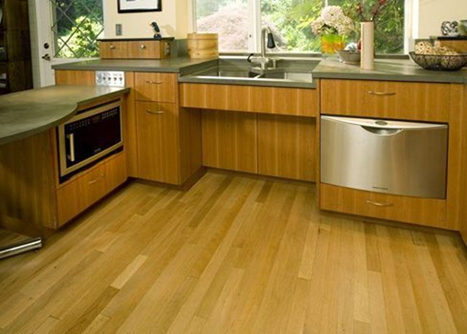
According to the AARP, 80 percent of older homeowners overwhelmingly prefer to Age in Place, which means living in a home safely, independently, and comfortably, regardless of age or ability level. People with disabilities are aging but some healthy individuals are aging into a disability. Aging in Place strictly deals with the remodeling of existing homes. Therefore, to Age in Place, owners need to gradually modify their homes as they mature by increasing access and safety using the principles of Universal Design before a life-changing event forces making sudden architectural changes. The Aging in Place market in the U.S. today is influenced by the increasing size of the aging population, the market desire to remain in one's home, a constantly increasing cultural diversity, and the aging housing stock associated with reduced affordability. The desire to remain in existing homes is driven by social attachments via a network of neighbors, friends, and family. Comfortable positive aging is a way of living rather than a state of being. What's more, seniors who took a proactive approach in modifying their homes over time offer peace of mind to their loved ones or caretakers who know their family members are living safely and independently in their homes.

T-Square Company is one of Austin's premier Aging in Place contractors offering complete Aging in Place services from home assessments to design/builds. We have over 30 years of accessibility knowledge to share with our clients making their home life less complicated. We hold a nationally recognized CAPS certification (Certified Aging in Place Specialist) offered by the National Association of Home Builders, NAHB. Contact T-Square Company today to find out how to proceed toward an accessible second chapter of life while your aging parents remain in their home. We offer complete Aging in Place design services.
By the way, David Traut, the President/owner of T-Square Company has recently published a book entitled "Age in Place at Home: Adapting the Home Environment for All Generations". It is available on Amazon and stands as a reference book for increasing home accessibility through Universal Design.

Tags:
aging in place remodeling,
aging in place home modifications,
aging in place home improvements in Austin,
frameless European,
aging in place designs,
accessible home remodeling,
Universal Design,,
aging in place services,
home modifications for independent living Austin,
universal design ideas,
Austin senior living solutions,
certified aging in place consultant in Austin,
aging in place specialist in Austin,
universal design remodeling contractor,
7 principles of universal design,
applying principles of universal design in Austin,
Austin disability contractors for special needs,
barrier free remodeling,
accessible homes,
universal design/build contractor,
why universal design,
what is universal design in Austin,
what is aging in place,
universal design techniques,
accessible home builder in Austin,
the basics of aging in place,
barrier free home design,
Disability Remodeling Services in Austin, Texas,
Universal Design for Disabilities,
aging in place services for seniors in Austin,
Barrier-free designs,
forever home,
aging parents caregiver guide,
houses designed to last a lifetime
If you have made a decision, along with the support of your family, to remain in your existing home while you Age in Place, you must determine a definite pathway forward to ensure your desires are successfully met. This is a sign of the times as today over 80% of homeowners share your desire to remain in their familiar home, surrounded by familiar surroundings and neighbors. Amongst any caregivers involved in your life, you will also need to obtain help from a trained and seasoned Certified Aging in Place Specialist.
Fortunately, construction and design professionals are taking advantage of the CAPS training across the nation. This designation is taught through the National Association of Home Builders in collaboration with AARP. CAPS connects responsible professionals with home owners who need these services on an ever-increasing basis. CAPS stands for Certified Aging in Place Specialist. It is a construction credential that has builders, architects, remodelers, designers and even occupational therapists buzzing. Aging in Place principles are changes designed to custom fit your existing home to you and your family's needs as time goes by. CAPS design takes your current and future circumstances into consideration and the principles focus on elegant, aesthetically enriching, barrier-free environments. Home modifications do not need to look institutional and this is why many seniors are resisting the very changes that can help them the most. Be aware, the vast majority of uncertified builders and remodelers do not have the knowledge and training to perform home modifications for Aging in Place. Take for instance when you are considering installing a grab bar, which seems like a simple endeavor, understand that a run of the mill contractor or handyman has no idea of the safety regulations involved or the knowledge concerning where and how to install the grab bar. This leaves the consumer in an unsafe predicament. However, if performed correctly, any modifications will actually increase the value of your home because they appeal to multiple generations of home buyers.
David L. Traut, CAPS the owner of T-Square Company in Austin, Texas is one of the select group of professionals to earn the Certified Aging In Place Specialist (CAPS) designation, identifying him as a home remodeler and builder with the skills and knowledge necessary to remodel or modify a home to meet the unique needs of the older population, disabled owners, or their visitors. T-Square Company offers a full compliment of Aging in Place services for their clientele. These services include the initial home assessment, a design followed by a detailed drawing, all city permits and fees, and the construction or remodeling work involved. David has been successfully operating as a CAPS professional for nearly thirty years while performing his design/build projects. His clients include many members of the private sector, the VA, and HUD. David is a CAPS certified remodeler and master builder providing a one-stop-shop which is even more valuable to anyone wanting to Age in Place. As a master craftsman, his construction knowledge enables any Aging in Place design to come to fruition via practicality and best practices.

David always practices what he preaches to his clients. He takes an inductive qualitative research approach with every client, because everyone has diverse physical needs. As an answer to his clients requests over the years, he has recently published a book entitled "Age in Place at Home: Adapting the Home Environment for All Generations". The book reflects on thirty years of accessibility improvements and identifies why our traditional homes specifically lack this very basic need. It is available on Amazon and stands as a reference book for increasing home accessibility using the principles of Universal Design in every room of the home. David is certified in the United States and Australia in the Universal Design process. Universal Design elements can be installed into a home at any time avoiding the need for reactive remodeling following a health crisis. This thoughtful proactive design process segues seamlessly into what is required for Aging in Place. Furthermore, Universal Design prevents the need to perform future modifications except under extreme circumstances. The presence of Universal Design provides access for both wheelchairs and walkers and perhaps avoids future injuries because you have accessibility.

For additional information about the CAPS program, visit nahb.org/CAPS. For more information about T-Square Company, visit www.tsquareco.com or call 512-444-0097 to schedule a home assessment by a local Austin CAPS professional.
So, just exactly what takes place once you schedule a home assessment? During the home assessment for increasing accessibility, the structural changes needed for the client will be noted and documented through sketches, photos, and conversation. CAPS professionals are generally paid by the hour or receive a flat fee per initial visit or project because they are offering a service backed by education and experience. Typically an assessment takes approximately 60-90 minutes. It’s best if you or a family member can accompany the CAPS professional during the home safety assessment, as you or they can ask questions about specific safety items as they come up. The comprehensive Home Safety Assessment determines a direct and safe path forward for you, the client. You will have a better chance of avoiding the high cost and physical disruptions of future injuries leading to assisted living. All the surroundings within your home will be taken into account from the flooring to the layout of a specific room or location as it pertains to the your ease of use. Your physical and emotional needs also come into play because of mobility, sensory, or cognitive concerns. The goal is to modify the home in a custom manner to provide for your maximum health, independence, and safety. Often the input from any caretakers like a physical or occupational therapist during the assessment phase can prove to be invaluable. The three main rooms involved in Aging in Place home modifications are the bathroom, the kitchen, and the family room in that order. The basic needs involve access through wider doorways, level non-slip floor surfaces, and lower cabinets with plumbing fixture accessibility like roll-under sinks with easily operated lever controls.
Aging in Place Bathroom Modifications in Austin
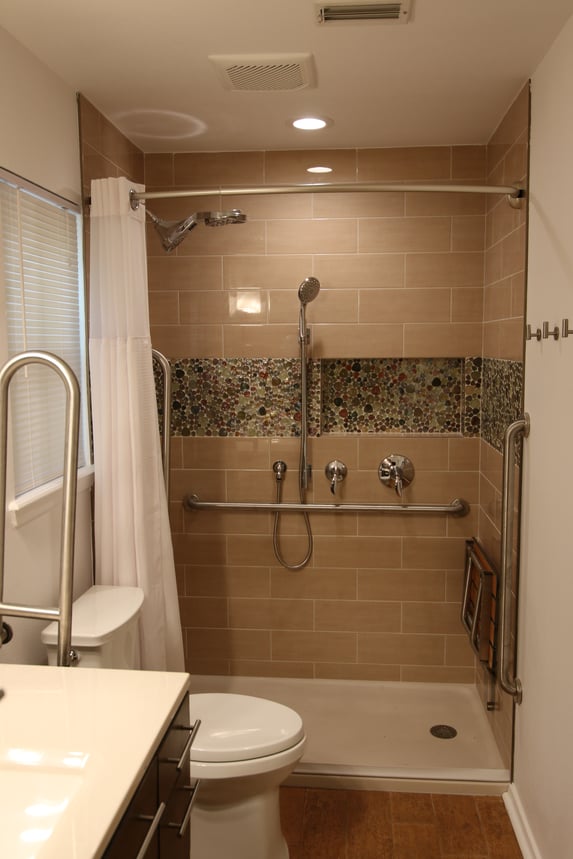
Quite often it is the home that presents the greatest difficulties for homeowners accompanied by limited mobility or other physical impairments as they age in their existing surroundings. Designing for specific physical conditions will lessen the impact of arthritis, restricted mobility, or loss of vision by using combinations of products, concepts, and techniques available today. Keeping safety in mind, interior modifications commonly include adding grab bars or handrails throughout the home, installing ramps or vertical platform lifts, lowering upper cabinets and countertops to Universal Design heights, adding non-slip flooring, widening hallways or installing stairlifts, and widening doors. You might also consider lowering light switches and thermostats and installing easier-to-use door levers or electric door openers. Try to provide a clear barrier-free path or accessible route to the most visited areas of your home like a disability access bath containing a roll-in ADA compatible shower, the kitchen, and the family room.

Tags:
barrier free access,
CAPS certification,
CAPS certified remodeling in Austin,
aging in place construction,
CAPS remodeling techniques,
disability home remodeling in Austin,
aging in place services,
aging in place design,,
elder construction,
certified aging in place specialist,
Austin elder construction,
handicap home modifications for disabled,
handicap remodeling contractors,
roll in showers,
handicap bathrooms,
universal design/build,
Austin Accessibility Design,
Austin senior living solutions,
Austin accessible home remodeling,
certified aging in place consultant in Austin,
bathroom modifications for disabled in Austin, TX,
aging in place specialist in Austin,
senior aging in place services,
home modifications for children with disabilities,
what does it mean to age in place,
aging in place home remodeling,
home remodeling for disabled in Austin Texas,
wheelchair accessible home remodeling in Austin,
austin texas wheelchair accessible showers,
home remodeling for seniors Austin,
Austin Senior Home Remodeling,
remodeling for elders in Austin,
disability and special needs contractor Austin,
bathrooms with disability access in Austin, Texas,
Austin disability contractors for special needs,
Austin handicap bathroom contractor,
handicap accessible remodeling,
barrier free remodeling,
handicap accessible bathroom remodeling,
handicap accessible home renovations,
handicap accessible home modifications,
disability remodeling,
handicap accessible bathroom remodel,
Austin aging in place specialist,
what is aging in place,
Age in Place at Home,
Disability Remodeling Services in Austin, Texas,
disability and special needs contractors in Austin,
universal design and accessibility in Austin,
Barrier-free designs,
forever home,
home accessibility help
If you have suddenly become caregiver for your aging parents, you are not alone. Everyone is living longer only to experience many life-challenging events during an extended lifespan, but some people require a little assistance. It could involve technology issues or helping them determine a path forward while living in their home. Many aspects are involved with senior living solutions, and the correct route is determined on an individual family basis. The desire to remain in one's current home is not driven by age. This need is a reaction to and the result of life's experience. Any family living with a disability among any of its family members will always benefit from familiar surroundings. To increase safety and independence within your current home, certain modifications to increase accessibility and use are typically required. These modifications include but are not limited to wider doorways, the installation of ramps, inclusive kitchen modifications, accessible bathroom modifications, and the application of smooth, non-skid flooring. When planning on what modifications are needed, always make a list of the home's most problematic areas for any or all of its residents. This basic desire is creating unprecedented nationwide challenges and a niche market in the remodeling industry known as Aging in Place. The majority of Americans over the age of 45 want to continue living in an environment they are well acquainted with throughout their maturing years. These people are looking for safety, security, ease of use, and comfort for their forever home before they must vacate due to specialized needs.
A forever home is unlike a starter home, and each occurs at different times during a resident's life. A starter home is a smaller home needed when you are starting out. It represents a stepping stone. This is a popular option concerning younger homeowners because it's more affordable. The forever home has the ability, through proactive planning and existing home modifications, for a family or all family members to live in the house for a very long time prior to anyone needing full time professional assistance. This home contains accessibility for everyone, regardless of their age, size, or abilities. During life's voyage, the forever home should become a reality as early as possible. This reality means the family can enjoy the comfortable home longer. It has adequate access through wider entries and doorways, a larger kitchen, larger bathrooms, larger bedrooms, and an accessible front and back yard. The more expensive larger forever home has room to comfortably maneuver about when using mobility devices since architectural barriers are nonexistent.

But where did this commonly seen lack of home accessibility in nearly all homes come from? Perpetual, status quo building techniques, and affordability provide the answers. Over time, along with the exponential birth rate of the baby boomers in the late 40s and 50s, the need for more housing created sprawling American suburbs to accommodate the growing families. Developments sprang up with few architectural options while affordability was the main concern. Today, these same homes slowly and increasingly signify outdated and obsolete architectural barriers exposing a true lack of accessibility for the very people inhabiting them. The situation is ever more expanding in time since the greatest majority of individuals want to age where they currently reside.
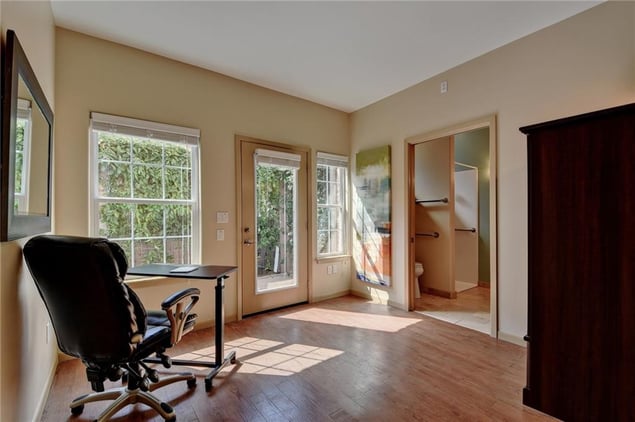
According to the AARP, 80 percent of older homeowners overwhelmingly prefer to Age in Place, which means living in a home safely, independently, and comfortably, regardless of age or ability level. People with disabilities are aging but some healthy individuals are aging into a disability. Aging in Place strictly deals with the remodeling of existing homes. Therefore, to Age in Place, owners need to gradually modify their homes as they mature by increasing access and safety using the principles of Universal Design before a life-changing event forces making sudden architectural changes. The Aging in Place market in the U.S. today is influenced by the increasing size of the aging population, the market desire to remain in one's home, a constantly increasing cultural diversity, and the aging housing stock associated with reduced affordability. The desire to remain in existing homes is driven by social attachments via a network of neighbors, friends, and family. Comfortable positive aging is a way of living rather than a state of being. What's more, seniors who took a proactive approach in modifying their homes over time offer peace of mind to their loved ones or caretakers who know their family members are living safely and independently in their homes.

Clearly, the act of Aging in Place occurs during a period of time when mature homeowners or seniors have the ability to make decisions to better support an increased quality of life. There are three segments served within the Aging in Place marketplace. The first segment includes those homeowners without urgent needs. The second segment focuses on a group of homeowners with progressive health needs. The third sector involves those people who have undergone traumatic health changes or accidental injuries necessitating immediate modifications to the home. The choice to Age in Place does not mean the homeowner has to do everything in the future by themselves. Aging in Place principles supports responsible people living life with dignity and independence even when outside assistance is essential.
T-Square Company is one of Austin's premier Aging in Place contractors offering complete Aging in Place services from home assessments to design/builds. We have over 30 years of accessibility knowledge to share with our clients making their home life less complicated. We hold a nationally recognized CAPS certification (Certified Aging in Place Specialist) offered by the National Association of Home Builders, NAHB. Contact T-Square Company today to find out how to proceed toward an accessible second chapter of life while your aging parents remain in their home. We offer complete Aging in Place design services.
By the way, David Traut, the President/owner of T-Square Company has recently published a book entitled "Age in Place at Home: Adapting the Home Environment for All Generations". It is available on Amazon and stands as a reference book for increasing home accessibility through Universal Design.

Tags:
aging in place remodeling,
aging in place home modifications,
aging in place home improvements in Austin,
frameless European,
aging in place designs,
accessible home remodeling,
Universal Design,,
aging in place services,
home modifications for independent living Austin,
universal design ideas,
Austin senior living solutions,
certified aging in place consultant in Austin,
aging in place specialist in Austin,
universal design remodeling contractor,
7 principles of universal design,
applying principles of universal design in Austin,
Austin disability contractors for special needs,
barrier free remodeling,
accessible homes,
universal design/build contractor,
why universal design,
what is universal design in Austin,
what is aging in place,
universal design techniques,
accessible home builder in Austin,
the basics of aging in place,
barrier free home design,
Disability Remodeling Services in Austin, Texas,
Universal Design for Disabilities,
aging in place services for seniors in Austin,
forever home,
aging parents caregiver guide
The concept of successful and independent aging has become increasingly important, while senior citizens dominate the population. An active independent engagement in life through participation in social and productive activities is a very important aspect of successful aging. However, the built environment oftentimes directly interferes with the successful engagements of older adults once their individual needs change. Therefore, it is necessary to provide modified living environments designed to suit the needs of aging adults. This is the essence of the Aging in Place market of today.
What can be done to solve this inevitable housing dilemma facing the growing number of aging Americans? Of all the design theories that attempt to accommodate the aging process, Universal Design is the most desirable option as it provides built environments that benefit everyone, regardless of their age, size, or ability. Universal Design is a promising voluntary philosophy that requires increased attention from designers and builders participating in Aging in Place. Taken as a whole, it is evident that the application of Universal Design to the home environment is a positive step toward successful aging and living for anyone. In fact, the principles of Universal Design segues directly into what is required for Aging in Place.
A Wheelchair Accessible Kitchen Incorporating Universal Design Principles

Our existing architecture does not lend itself well to accomplishing any simple Aging in Place home remodels. In fact, there are more inaccessible homes in all of the US than there are accessible homes and 45% of these existing traditional homes are owned by baby boomers. What is more, the baby boomer group represents the largest and oldest group of homeowners. This particular aging group desires to live in their existing home around familiar surroundings as they Age in Place. But what if, for some reason, a home that was once sufficient for all family members becomes no longer accessible. This involves the need for a certified CAPS professional.
Unfortunately, in most traditional residential US properties, there are commonly no easy ways to enter the home proceeding into bathrooms or utilizing kitchens without coming into contact with one architectural barrier or another-especially if a wheelchair or walker is being used to help with mobility issues. While an estimated 80% of aging homeowners have a firm plan to Age in Place, every mobility device requires the proper clearance and distance along a customized accessible route within the home to function properly. This comfortable route is identified during wheelchair remodeling projects.

The National Association of Home Builders, in partnership with the AARP and Home Innovation Research Labs, created the CAPS program, which includes training and education on the technical, business management and customer service skills essential to compete in the fastest growing segment of the residential remodeling industry--home modifications for aging in place. David L. Traut, CAPS the President and owner of T-Square Company in Austin, Texas is one of the select group of professionals nationwide to earn the Certified Aging-In-Place Specialist (CAPS) designation, identifying him as a home remodeler and builder with the skills and knowledge necessary to remodel or modify a home to meet the unique needs of the older population, disabled owners, or their visitors. T-Square Company offers complete services concerning disability renovations beginning with their design/build philosophy. Furthermore, David is certified in Universal Design in the United States and Australia. Call them today at 512-444-0097 to set up a professional assessment of your living situation.

After over a year of writing to fulfill his customers' requests, David's new book, "Age in Place At Home," is available for purchase from Amazon. Go to the link below to order his knowledgeable paperback book, which was released in late November, 2022. It provides a great guideline for using the principles of Universal Design in new home construction and/or remodeling for every room in your home. Get your copy today.
https://www.amazon.com/gp/r.html?C=2Z24ENUUAEWUK&K=13Y7YU7PKKYAC&M=urn:rtn:msg:20221010201802eb9acb7b24004a4785cd2ec1d4f0p0na&R=3R6MK9WDXJPH7&T=C&U=http%3A%2F%2Fwww.amazon.com%2Fdp%2FB0BHTV28RV%3Fref_%3Dpe_3052080_276849420&H=7FWEPMGCH0TT8LN6SKPMUOCVJNYA&ref_=pe_3052080_276849420
Tags:
wheelchair accessible remodeling,
ADA remodeling,
ADA compliance,
Austin Accessibility Design,
Austin accessible home remodeling,
senior aging in place services,
universal design building for a lifetime,
what is universal design,
universal principles of design,
Austin Senior Home Remodeling,
senior home modifications in Austin,
Austin disability contractors for special needs,
Austin aging in place specialist,
veterans home accessibility help in Austin, Texas,
what is aging in place,
wheelchair accessible homes,
Austin home accessibility solutions,
ADA Accessibility,
home accessibility services,
forever home,
sustainable living design
Suppose the current pandemic taught us anything concerning safety and institutional living situations. In that case, we now know it is much safer to remain in a barrier-free home surrounded by familiar surroundings and friends. During the stay-at-home mandates, everyone knew what Aging in Place meant because all family members lived within this inspirational and needed solution. We all became better acquainted with our homes and family members. The best way to approach a desire to Age in Place is by being proactive before an illness takes control of your life. At that point, you must deal with it reactively. There are many differences between home modifications and a home remodel. The main difference is home modifications involve investing in your familiar home versus spending during remodeling. Home modifications enhance your ADL (Activities of Daily Living), whereas remodeling deals more with aesthetics. An example of a home modification increasing accessibility includes a walk-in tub with easy access versus an aesthetically pleasing deep soaking tub. Investing in your home using the principles of Universal Design will benefit your future retirement years by making your home gradually conform to your needs. The point of involving this universal technique in periodic remodels within your home is that the alterations appear invisible until their advantages are needed when your housing needs change. A professional CAPS program graduate performs accepted home modifications to increase accessibility for any resident.
What are CAPS services, and what does CAPS stand for? Let's be clear, it has nothing to do with hats or the associated industry. First of all, CAPS stands for Certified Aging in Place Specialist. The aging societal changes and inventory of inaccessible existing houses created the need for a CAPS certification program. This designation program, offered through the National Association of Home Builders, NAHB, in collaboration with The American Association of Retired Persons AARP, incorporates components of assessment, technical knowledge, and management skills related to proven home modifications used to help people stay at home safely and independently for a more extended time. The program was developed in 2001. The CAPS program connects responsible professionals with homeowners needing specialized accessibility services ever-increasingly. Professional CAPS services include home assessments, consultations, accessible designs, complete build-outs, accessible additions, and determining a positive path forward for any individual or their visitors requiring better accessibility and usage of their existing home, better fitting their personal needs.
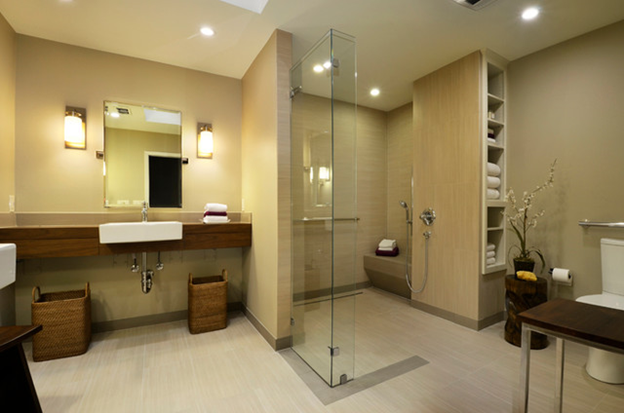
The CAPS services offered by a CAPS professional vary from a complete accessible remodel beginning at the curb and ending inside the backyard. Additionally, you can improve the comfort of the most used rooms in the home, like bathrooms, kitchens, and family rooms. The detailed process begins with a home assessment. The precise modifications identified increase usability according to the homeowner's and family's personal needs. The housing modifications are designed for all generations within a home, from children to older adults. Ordinary homeowners with extraordinary challenges partner up with experienced CAPS professionals and their own families. Working as a team, the trained CAPS specialist and any family caretakers or therapists identify the day-to-day problems weighing on those with health limitations. Aging in Place services provided by a specialized remodeling contractor ensures all accessibility issues of the home are accomplished correctly. T-Square Company, located in SW Austin, Texas, is one of the specialized CAPS certified contractors.
The CAPS credential is a nationwide initiative, and many building and design professionals are taking advantage of the helpful training nationwide. David L. Traut, president, and owner of T-Square Company, is an active CAPS member (#1636580) and has participated in the program for over a decade. Furthermore, he has actively completed accessibility design/build remodels for over three decades for the private sector, HUD, and the VA. Always check a person's credentials to verify the remodeler holds an active CAPS certification and is familiar with Universal Design. All registered CAPS program graduates and remodeling companies are listed in a national registry in Washington, DC. The information is found by calling 1-800-368-5242 or simply visiting their website at: http:www.nahb.org/en/learn/designations/certified-aging-in-place-specialist.aspx.

T-Square Company in SW Austin, Texas, located at 14141 Highway 290 West, Suite 800, is a CAPS-certified remodeler and offers design/build Aging in Place projects using principles of Universal Design. Call 512-444-0097 to discuss your project today and learn how to achieve better accessibility within your existing home. Our knowledge and experience can help solve your personal needs within your existing home. Whether you need a safer shower, wider doorways, a zero-step entrance, or a more accessible kitchen to entertain your family and friends, T-Square Company is here to help.
Tags:
barrier free access,
aging in place remodeling,
CAPS,
aging in place home modifications,
ADA compliance,
custom tub to shower conversions,
accessible home remodeling,
CAPS remodeling techniques,
aging in place services,
bathroom modifications for disabled,
ADA bathroom Austin, Texas,
home modifications for independent living Austin,
Austin Handicap Remodeling,
universal design ideas,
certified aging in place consultant in Austin,
universal design remodeling contractor,
handicap accessible remodeling,
barrier free remodeling,
disability remodeling,
handicap accessible bathroom shower,
veterans home remodeling in Austin, Texas,
veterans home accessibility help in Austin, Texas,
accessible toilets,
ADA Compliant grab bars,
home access,
what is aging in place,
accessible home builder in Austin,
ADA Compliant Bathroom Vanity,
the basics of aging in place,
universal design home additions,
CAPS-certified remodeling in Dripping Springs,
Dripping Springs home accessibility solutions,
Dripping Springs kitchen remodel,
Dripping Springs bathroom remodel,
Dripping Springs TX home modification services,
Dripping Springs home modification services,
Dripping Springs bath remodeling,
Dripping Springs senior home remodeling,
Dripping Springs special needs contractor,
Dripping Springs aging in place specialist
While it may not be possible for every older adult to live independently in their existing home forever, there are many modifications that can be made to the home to increase safety and make it more functional for the homeowners to remain in their own homes longer. By gradually implementing home alterations that support aging in place, today’s seniors maintain their independence, and in the long run, may save a substantial amount of money on senior living.
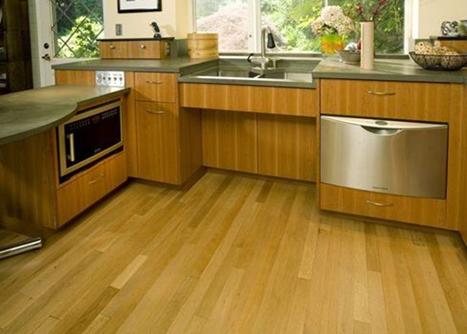
More seniors are opting to age in place than ever before. This trend is driven in part by the rising costs of long-term care, coupled with the rapidly growing senior population as the Baby Boomer generation ages. This particular generation is enjoying a more active, vibrant lifestyle than all other previous generations. Increasing technology and the wider availability of personal services, such as home meal delivery, are making it easier for seniors to remain in their own homes independently. However, aging in place is not for everyone, especially when major disabilities are involved.

As with any successful endeavor, You must establish a reasonable plan of action to age in place. This action will involve the input of all parties associated with the homeowner(s). The participants include caregivers, occupational therapists, physical therapists, extended family members, and any other professional medical personnel. Steps taken to move in a positive direction include:
- Take note of your personal abilities and any difficulties you have moving around your home within specific areas.
- Seek out a professional assessment of your home provided by a CAPS (Certified Aging in Place Specialist)member. This way you know that you are in good hands because sometimes the renovations required to accommodate a senior or any disabled person, regardless of age, are no easy task and instead take a lot of time, knowledge, and effort.
- If you live in a multi-story home, combine the main rooms for activity on the first floor. If this isn't possible, entertain the idea of installing a stair-lift, or better yet, an elevator in your home.
- Widen all doorways to 36-inches, and include pocket doors in certain areas to limit architectural barriers caused by swinging doors. Make sure there is at least one no-step entry into the house. Install lever-style door hardware when possible throughout the home.
- Install a slip-resistant floor throughout your home using wood flooring, cork, rubber, or porcelain tile. Be mindful of the chosen flooring's hardness in case of falls. Carpet offers too much resistance when using any mobility device causing tripping, falls, and instability. Ensure all transitions when changing floor materials are as smooth as possible and below 1/2 inches in height.
- Take note of any lighting issues producing dark areas in any room. Add layered lighting throughout the home to increase safety.
- Reduce the clutter in all rooms and provide a clear five-foot turning radius in every room.
- Reduce the number of doors on cabinets opting for full-extension pull-out shelves or drawers.
- As for the bathroom, provide a walk-in or roll-in shower with grab bars on all sides versus a garden tub. A hand-held and fixed shower head provides options for the user or caretaker. A roll under vanity is great for wheelchair use or applying makeup from a seated position. A comfort height toilet associated with grab bars reduces the discomfort of deep knee bends.
- For the kitchen, make it as adaptable as possible to suit the needs of child helpers or granny in her wheelchair. Offer varying cabinet heights and work surfaces. Plan for the shortest work triangle formed by your main sink, refrigerator, and stove locations. Raise your dishwasher 9-12 inches above the floor making it easier to load and unload for everyone.
- Last, but not least, comes the laundry. Install side-swinging doors of opposite swings for the washer and dryer enabling you to simultaneously access both machines from the middle. Don't forget to set the machines on a pedestal to raise them above the floor, in case you ever find yourself using a wheelchair.

T-Square Company, located in Austin, Texas offers complete design/build Aging in Place Services to its clientele. David L Traut, the President, and owner of T-Square Company is national CAPS certified and has been doing successful accessibility remodels, additions, and construction for over 30 years. Some of our clients include HUD, the VA, and many private homeowners. Contact us today to see how T-Square Company can help you solve issues to streamline your home accessibility to Safely and Comfortably Age in Place in your existing home.
Tags:
aging in place remodeling,
CAPS,
aging in place home modifications,
aging in place,
aging in place remodels,
Universal Design,,
home modifications for independent living,
aging in place specialist,
aging in place services,
aging in place design,,
elder construction,
accessibility remodelers in Austin,
home modifications for independent living Austin,
Austin accessible home remodeling,
certified aging in place consultant in Austin,
universal design building for a lifetime,
aging in place home remodeling,
home remodeling for disabled,
home accessibility help in Austin,
remodeling for elders in Austin,
disability contractor in Austin,
home modifications for elderly in Austin,
handicap accessible remodeling,
barrier free remodeling,
disability remodeling,
home modifications for Austin veterans,
home access,
accessible homes,
universal design/build contractor,
universal design vs. aging in place,
home accessibility,
what is aging in place,
accessible housing,
accessible homes in austin,
modifying your home for a disabled child,
accessible home builder in Austin,
special needs contractor,
home renovations for disability in Austin,
the basics of aging in place,
maneuvering in and around the accessible home,
barrier free kitchens,
universal design home additions,
barrier free design,
barrier free home design,
Age in Place at Home,
disability home remodeling near me,
universal design building consultant,
home modifications for aging in place
Everyone is living longer only to experience many life-challenging events during an extended lifespan.The desire to remain in your current home is not driven by age. This need is a reaction to and the result of life's experience. Any family living with a disability among any of its family members will always benefit from familiar surroundings. To increase safety and independence within your current home, certain modifications to increase accessibility and use are typically required. These modifications include but are not limited to wider doorways, the installation of ramps, inclusive kitchen modifications, accessible bathroom modifications, and the application of smooth, non-skid flooring. When planning on what modifications are needed, always make a list of the home's most problematic areas for any or all of its residents. This basic desire is creating unprecedented nationwide challenges and a niche market in the remodeling industry known as Aging in Place. The majority of Americans over the age of 45 want to continue living in an environment they are well acquainted with throughout their maturing years. These people are looking for safety, security, ease of use, and comfort for their forever home before they must vacate due to specialized needs.

But where did this commonly seen lack of home accessibility in nearly all homes come from? Perpetual, status quo building techniques, and affordability provide the answers. Over time, along with the exponential birth rate of the baby boomers in the late 40s and 50s, the need for more housing created sprawling American suburbs to accommodate the growing families. Developments sprang up with few architectural options while affordability was the main concern. Today, these same homes slowly and increasingly signify outdated and obsolete architectural barriers exposing a true lack of accessibility for the very people inhabiting them. The situation is ever more expanding in time since the greatest majority of individuals want to age where they currently reside.

According to the AARP, 80 percent of older homeowners overwhelmingly prefer to Age in Place, which means living in a home safely, independently, and comfortably, regardless of age or ability level. People with disabilities are aging but healthy individuals are aging into a disability. Aging in Place strictly deals with the remodeling of existing homes. Therefore, to Age in Place, owners need to gradually modify their homes as they mature increasing access and safety using the principles of Universal Design before a life-changing event forces making sudden architectural changes. The Aging in Place market in the U.S. today is influenced by the increasing size of the aging population, the market desire to remain in one's home, a constantly increasing cultural diversity, and the aging housing stock associated with reduced affordability. The desire to remain in existing homes is driven by social attachments via a network of neighbors, friends, and family. Comfortable positive aging is a way of living rather than a state of being. What's more, seniors who took a proactive approach in modifying their homes over time offer peace of mind to their loved ones who know their family members are living safely and independently in their homes.

Clearly, the act of Aging in Place occurs during a period of time when mature homeowners or seniors have the ability to make decisions to better support an increased quality of life. There are three segments served within the Aging in Place marketplace. The first segment includes those homeowners without urgent needs. The second segment focuses on a group of homeowners with progressive health needs. The third sector involves those people who have undergone traumatic health changes or accidental injuries necessitating immediate modifications to the home. The choice to Age in Place does not mean the homeowner has to do everything in the future by themselves. Aging in Place principles supports responsible people living life with dignity and independence even when outside assistance is essential.
T-Square Company is one of Austin's premier Aging in Place contractors offering complete Aging in Place services from home assessments to design/builds. We have over 30 years of accessibility knowledge to share with our clients making their home life less complicated. We hold a nationally recognized CAPS certification (Certified Aging in Place Specialist) offered by the National Association of Home Builders, NAHB. Contact T-Square Company today to find out how to proceed toward an accessible second chapter of your life while remaining at home. We offer complete Aging in Place design services.

Tags:
aging in place remodeling,
aging in place home modifications,
aging in place home improvements in Austin,
accessible home remodeling,
aging in place services,
home modifications for independent living Austin,
universal design ideas,
certified aging in place consultant in Austin,
aging in place specialist in Austin,
universal design remodeling contractor,
7 principles of universal design,
applying principles of universal design in Austin,
barrier free remodeling,
universal design/build contractor,
why universal design,
what is universal design in Austin,
what is aging in place,
universal design techniques,
accessible home builder in Austin,
the basics of aging in place
What are CAPS services and what does CAPS stand for? First of all, CAPS stands for Certified Aging in Place Specialist. The aging societal changes and inventory of inaccessible existing houses created the need for a CAPS certification program. This designation program, offered through the National Association of Home Builders, NAHB, in collaboration with The American Association of Retired Persons or AARP, incorporates components of assessment, technical knowledge, and management skills related to home modifications used to help people stay at home safely and independently for a longer period of time. The program was developed in 2001.
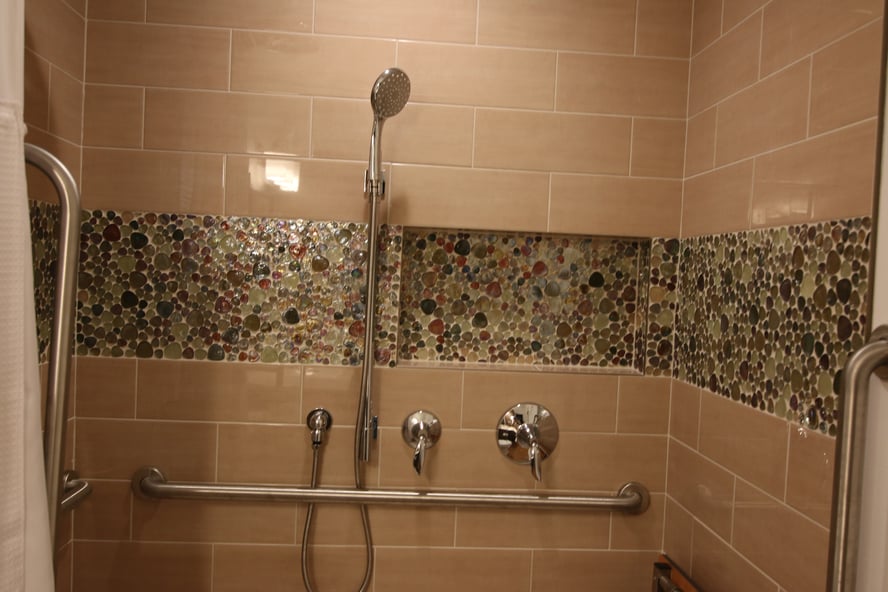
The services offered by a CAPS professional varies from a complete accessible remodel to improving certain areas in the home like bathrooms or kitchens. The precise modifications increase usability according to personal needs of the homeowner and family. The CAPS program connects responsible professionals with homeowners needing specialized accessibility services on an ever-increasing basis. Ordinary homeowners with extraordinary challenges partner up with experienced CAPS professionals and their own families. Working as a team, the trained CAPS specialist along with any family caretakers or therapists is able to identify the day-to-day problems weighing on those with health limitations. Aging in Place services provided by a specialized remodeling contractor ensures all accessibility issues of the home are accomplished correctly. T-Square Company located in Austin, Texas is one of the specialized CAPS certified contractors.
The CAPS credential is a nationwide initiative and many construction and design professionals are taking advantage of the helpful training across the nation. David L. Traut, president, and owner of T-Square Company is an active CAPS member (#1636580) and has participated in the program for over a decade. Furthermore, he has actively completed accessibility design/build remodels for over 25 years for the private sector, HUD, and the VA. Always check a person's credentials to verify the remodeler holds an active CAPS certification and is familiar with Universal Design. All registered CAPS program graduates and remodeling companies are listed in a national registry in Washington DC. The information is found by calling 1-800-368-5242 or by simply visiting their website at: http:www.nahb.org/en/learn/designations/certified-aging-in-place-specialist.aspx.

If the current pandemic taught us anything concerning safety and institutional living situations, we now know it is much safer to remain in your home surrounded by familiar surroundings and friends. During the stay-at-home mandates, everyone was aware of what Aging in Place meant. We all became better acquainted with our homes and family members. The best way to approach a desire to Age in Place is by being proactive before an illness takes control of your life. At that point, you must deal with it in a reactive manner. There are many differences between home modifications and a home remodel. The main difference is home modifications involve investing in your familiar home versus spending during remodeling. Home modifications are used to enhance your ADL (Activities of Daily Living) whereas remodeling deals more with aesthetics. Investing in your home will benefit your future retirement years by making your home conform to your needs.
T-Square Company in Austin, Texas is a CAPS certified remodeler and offers design/build Aging in Place projects using principles of Universal Design. Call 512-444-0097 to discuss your project today and learn how you can achieve better accessibility within your existing home. Our knowledge and experience can help solve your personal needs within your existing home. Whether you need a safer shower, wider doorways, a zero-step entrance, or a more accessible kitchen to entertain your family and friends, T-Square Company is here to help.
Tags:
barrier free access,
aging in place remodeling,
CAPS,
aging in place home modifications,
ADA compliance,
custom tub to shower conversions,
accessible home remodeling,
CAPS remodeling techniques,
aging in place services,
bathroom modifications for disabled,
ADA bathroom Austin, Texas,
home modifications for independent living Austin,
Austin Handicap Remodeling,
universal design ideas,
certified aging in place consultant in Austin,
universal design remodeling contractor,
handicap accessible remodeling,
barrier free remodeling,
disability remodeling,
handicap accessible bathroom shower,
veterans home remodeling in Austin, Texas,
veterans home accessibility help in Austin, Texas,
accessible toilets,
ADA Compliant grab bars,
home access,
what is aging in place,
accessible home builder in Austin,
ADA Compliant Bathroom Vanity,
the basics of aging in place,
universal design home additions
As a universal design/build construction company located in Austin, Texas, T-Square Company realizes that building for your future changing needs is a very valuable consideration concerning all your periodic remodeling projects. We always design for the future for our clients, regardless of their age or abilities. This thought process is especially true when designing a bathroom upgrade. Being a nationally CAPS certified remodeler, we are very aware your personal needs can change in the blink of an eye. The daily tasks of getting into the bathroom, bathing, showering, using the toilet, or brushing your teeth can become almost impossible without assistance if you don't address your bathroom's inaccessibility in a proactive manner. Any revisions must be completed before you absolutely need the help. Design shortcomings become ever so noticeable if you have an accident and are recovering at home or a debilitating disease sets in. Most all problems caused by architectural barriers will be eliminated with a handicap accessible bathroom remodel.
We are certain that avoiding emergency remodeling while incorporating Universal Design techniques into your home whenever possible is a great way of enhancing your health, independence, and safety. This practice also provides a better overall quality of life. The sooner the main inaccessible areas in your home are addressed, the longer you and your family have to enjoy them. For those desiring to Age in Place, as in safely living in your own home for as long as possible, gradually incorporating the principles of Universal Design into all remodeling projects provides a seamless gateway for successful aging. So, what are the main concerns when designing a bathroom for the future?
Getting Into The Bathroom
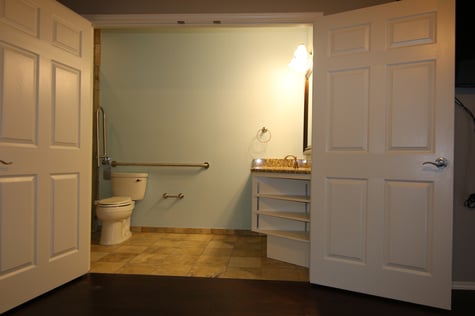
When possible, you should always install a 36-inch wide door into your bathroom allowing all mobility devices to enter without obstruction. Sometimes it's easier when walls cannot be altered or removed to make a large double door entry into the bathroom. Replacing the original twenty-four to twenty-eight-inch wide door offers maximum accessibility for anyone. This universal design element provides clear approaches toward all bathroom fixtures from an adjoining room. Additionally, an unobstructed 60-inch wheelchair turning radius is shared by the bathroom and adjacent room.
An Accessible Shower
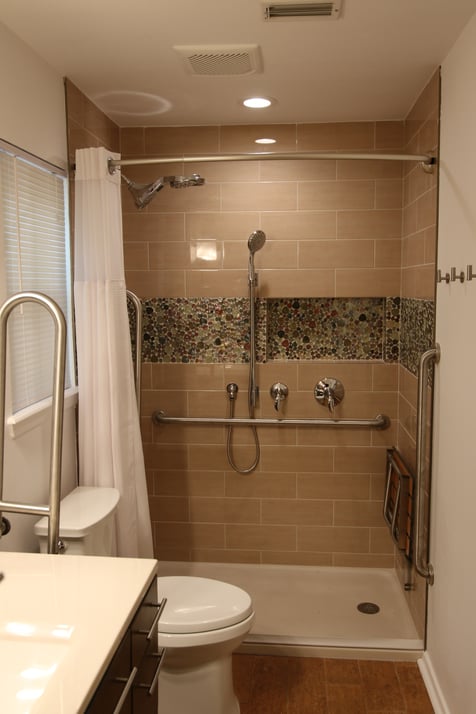
A safe, low-profile (1 1/2" tall) accessible shower with roll-in capability from an add-on ramp suits the needs of most diverse homeowners. Even if you don't require the grab bars during a particular phase of your life, installing adequate blocking before the tile is installed provides a universal path for your future needs once the bars are required. Take note, the grab bars must be able to withstand a shear force of 300 pounds. Their purpose is to provide support and stability when you need it most. Clutter within the shower and especially on the shower floor is a safety hazard. Recessed shampoo niches keep shampoo bottles and other items off the floor. Additionally, folding shower seats are far safer than free-standing models that are rarely ever in the right place. They save space when folded while not in use and never interrupt the use of a shower chair. It is a common misconception that shower controls must be mounted on one wall underneath the fixed shower head. Shower valves can be installed anywhere they are most convenient for the user, especially if a caretaker is involved. A recessed shower can light above the shower decreases shadows and further increases safety.
Using The Toilet
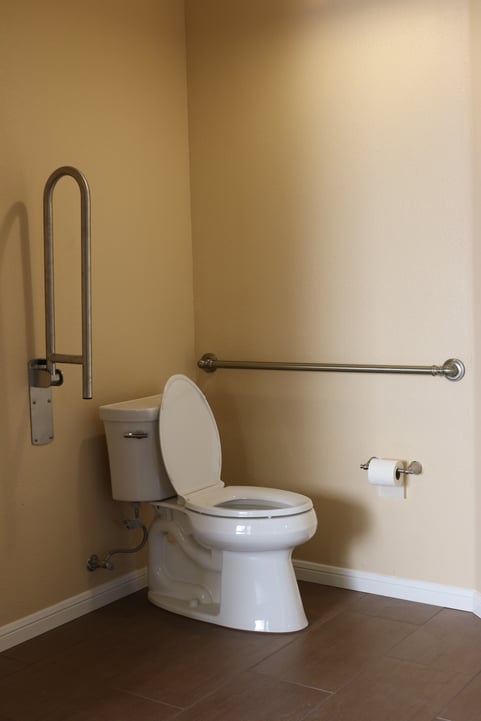
When a toilet exists in a confining room or space, there is no easy way of approaching it if you have mobility problems and especially if you are using any kind of mobility device. After all, safety is the predominant concern when using the toilet. Remove all restricting walls and narrow doors so everyone can freely approach and use the toilet. Once again, grab bars increase safety when they are required and must be adequately prepared for installation. Another problem with toilets involves those that are too short requiring deep knee bends for using them. A higher comfort height toilet offers significant help with this problem. Be sure the flush handle is toward the open side of the bathroom.
Brushing Your Teeth
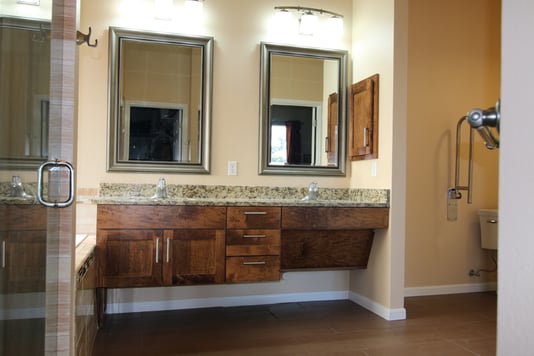
Offering adaptability in a vanity is a universal design aspect. Everyone has equal access while standing or using a wheelchair--if only for a short time during recoveries. More adaptability is offered using multiple height countertops. Lever faucets are easier for everyone to operate, even for those users with arthritis. Motion-sensor faucets create washing areas that are completely hand-free.
When you are ready to take the next steps toward your accessible future, contact T-Square Company in Austin, Texas. We can show you how to address your personal needs using our more than thirty years of knowledge and design/build accessibility experience. We guarantee to keep you safer in your existing home longer and out of dangerous and uncaring institutions using our proven design methods. We offer all handicap accessible home renovations or additions--especially accessible bathrooms.
David L. Traut, CAPS #1636580
Tags:
aging in place remodeling,
custom walk in showers,
certified aging in place specialist,
ADA bathroom Austin, Texas,
disability access bathrooms Austin,
Austin Handicap Remodeling,
universal design ideas,
universal design building for a lifetime,
home accessibility help in Austin,
universal design remodeling contractor,
7 principles of universal design,
applying principles of universal design in Austin,
handicap accessible remodeling,
barrier free remodeling,
disability remodeling,
handicap bathroom remodel,
ADA compliant wheelchair accessible showers,
disability access contractor,
veterans home accessibility help in Austin, Texas,
barrier free showers in Austin,
accessible bathroom design specifications,
ADA vanity in Austin,
accessible toilets,
what is an ADA compliant bathroom,
universal design/build contractor,
universal design vs. aging in place,
home accessibility,
accessible design,
why universal design,
what is aging in place,
accessibility home modifications,
handicap bathroom vanity,
handicap accessible floor plans,
maneuvering in and around the accessible home,
future home building using universal design,
universal design home additions
The goal of Universal Design is to create a living environment allowing as many people as possible to use it without further major adaptations. Simply defined, Universal Design is a human centered method of design seeking to create environments and products offering safety and comfort for all people with no need for further adaptation or functional changes. No one ever enters a well thought out inclusive Universal Design room reporting the room as being accessible. Everyone does mutually agree it is a good idea. Universal Design creates a supportive environment where the home is designed to suit the homeowner’s changing needs from children to adults. Universal Design addresses future accessibility concerns in newer homes and present day remodels when used in the building process.
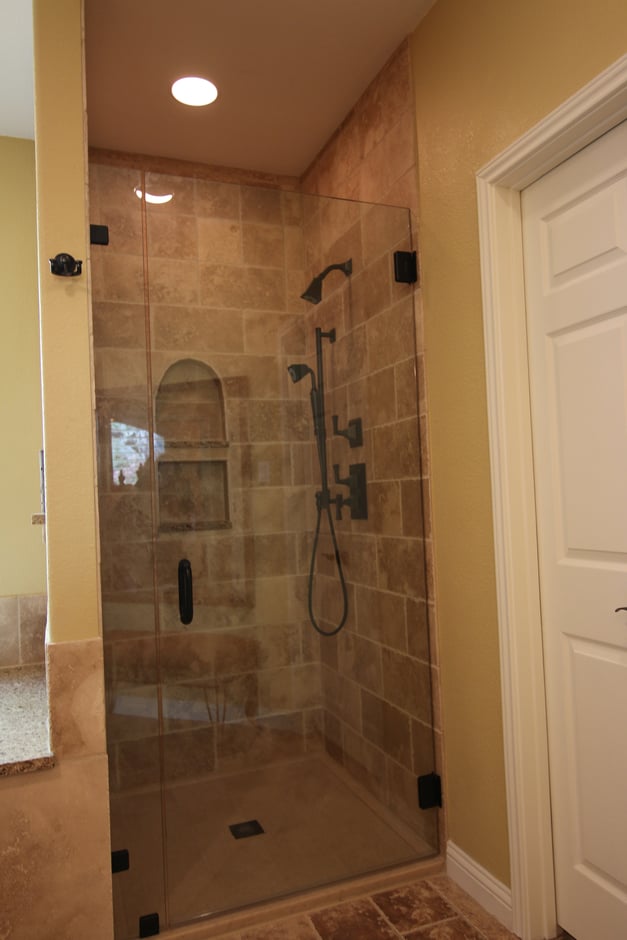
A serious accident is not always required to bring to realization the short comings of an inaccessible home. The limitations and demands of an aging body, the needs of a child, or an elderly visitor distinguish this awareness. The earlier in life the elements of Universal Design are used in a home the longer the entire family has to enjoy them. Once disability is recognized and conceived in a way forcing the redesign of the living environment, it never appears abnormal using Universal Design. It appears to most people as a creative aspect of a home. The invisible nature of this design process allows everyone to benefit from its accessibility without calling attention to anyone. Most everyone benefits from Universal Design because if a design works well for the disabled it works better for everyone on a universal basis. It offers flexibility and adaptability for adding universal accessories now and later to those planning ahead or to the end user. It does not matter if a person is young or old, short or tall, healthy or ill. They might have a disability or be a star athlete. With Universal Design ideas, very diverse and different people enjoy the same home no matter the circumstances.
Universal Design features in a home involve the use of standard universal building products and materials arranged differently or completely omitted for accomplishing greater accessibility with fewer architectural barriers. The same building processes are used for both traditional designs and Universal Designs. The difference is in the final overall open plan and layout and the uninterrupted traffic flow potential of the universal home. How successful a Universally Designed home is depends on how occupants and future visitors feel when entering. The universal home is comfortable for children, a visiting older relative, or a friend who is ill or injured. It is more advantageous if people simply change their way of thinking and ultimately the way the homes are built from the beginning. This is the only way of building forever homes for the future. If everyone demands homes capable of aging requiring fewer major and only minor modifications eventually to Age in Place, the home building industry finally satisfies the needs of consumers.

Tags:
barrier free access,
aging in place remodeling,
aging in place home modifications,
accessible home remodeling,
universal design ideas,
certified aging in place consultant in Austin,
universal designbuilding for the future,
universal design remodeling contractor,
7 principles of universal design,
applying principles of universal design in Austin,
barrier free remodeling,
universal design/build contractor,
universal design contractor,
why universal design,
what is aging in place,
the basics of aging in place,
applying universal design
























